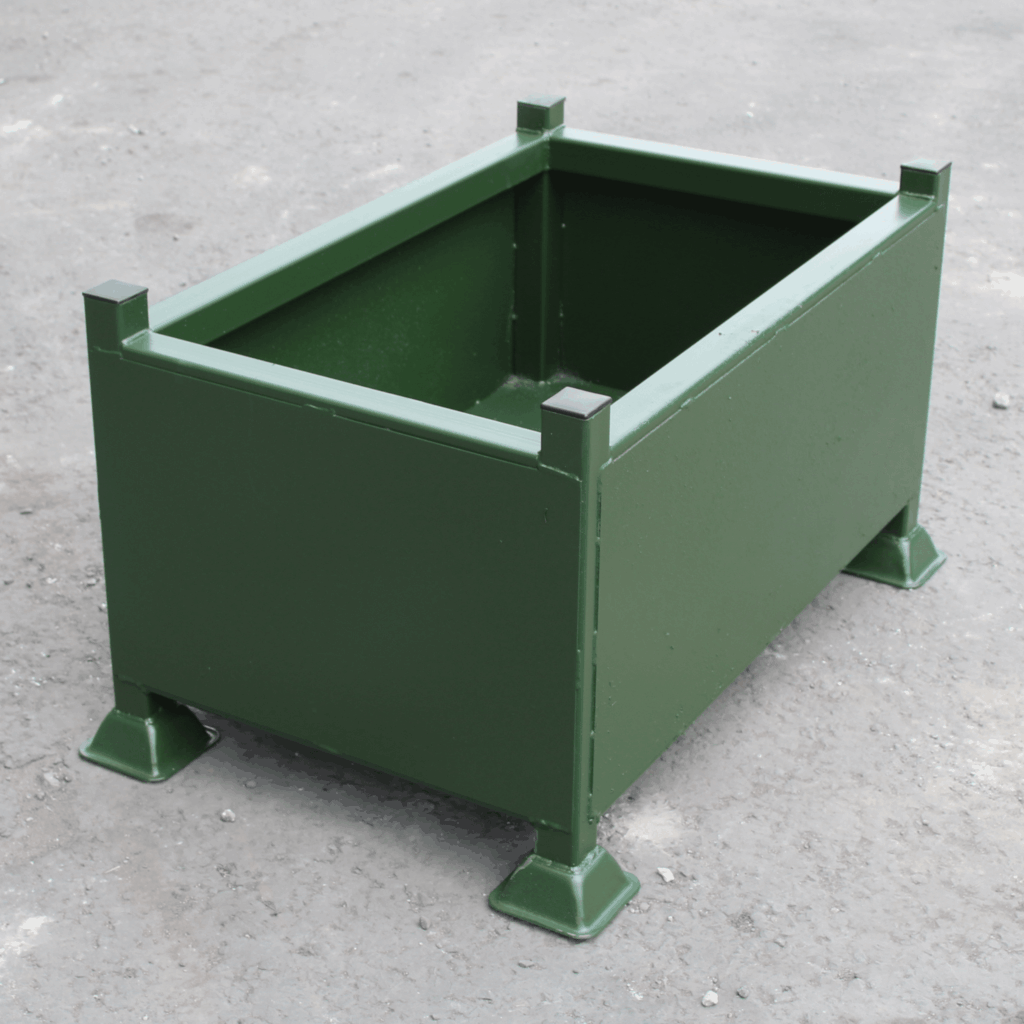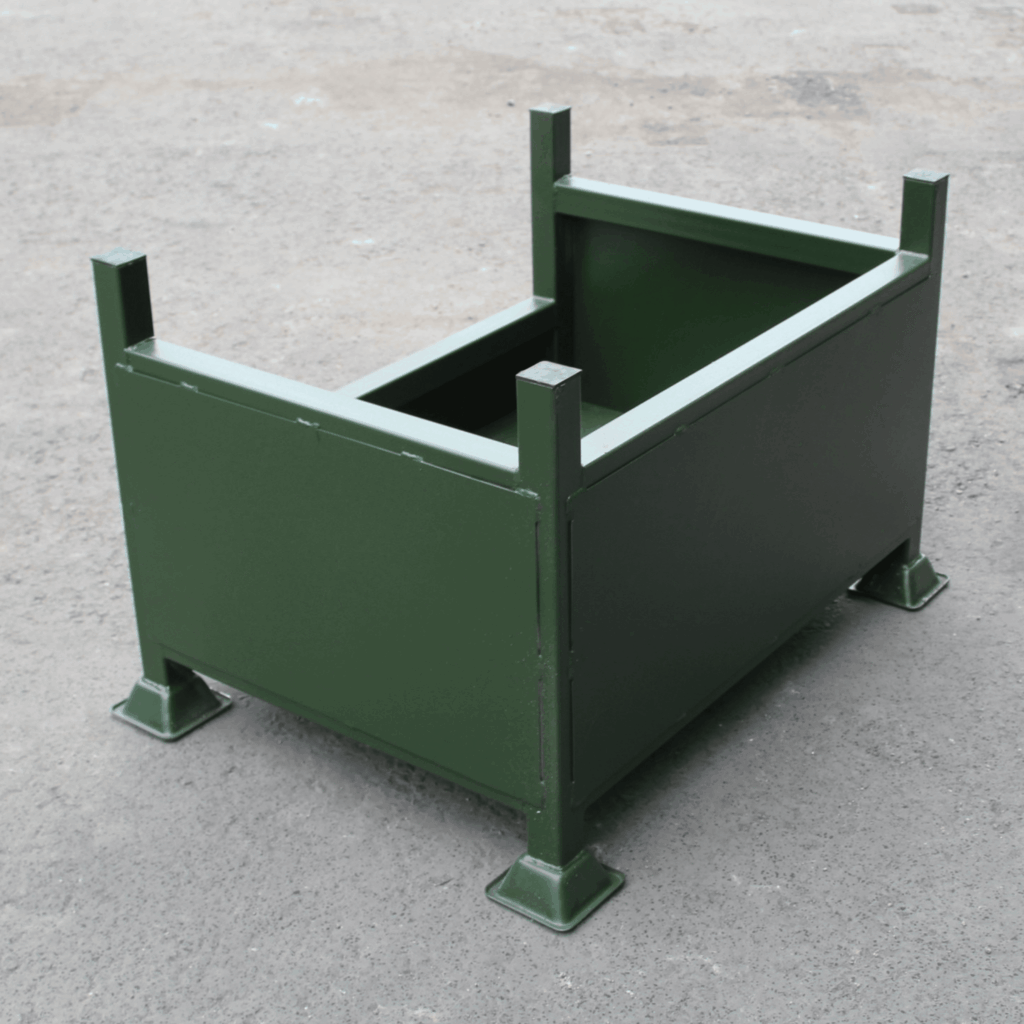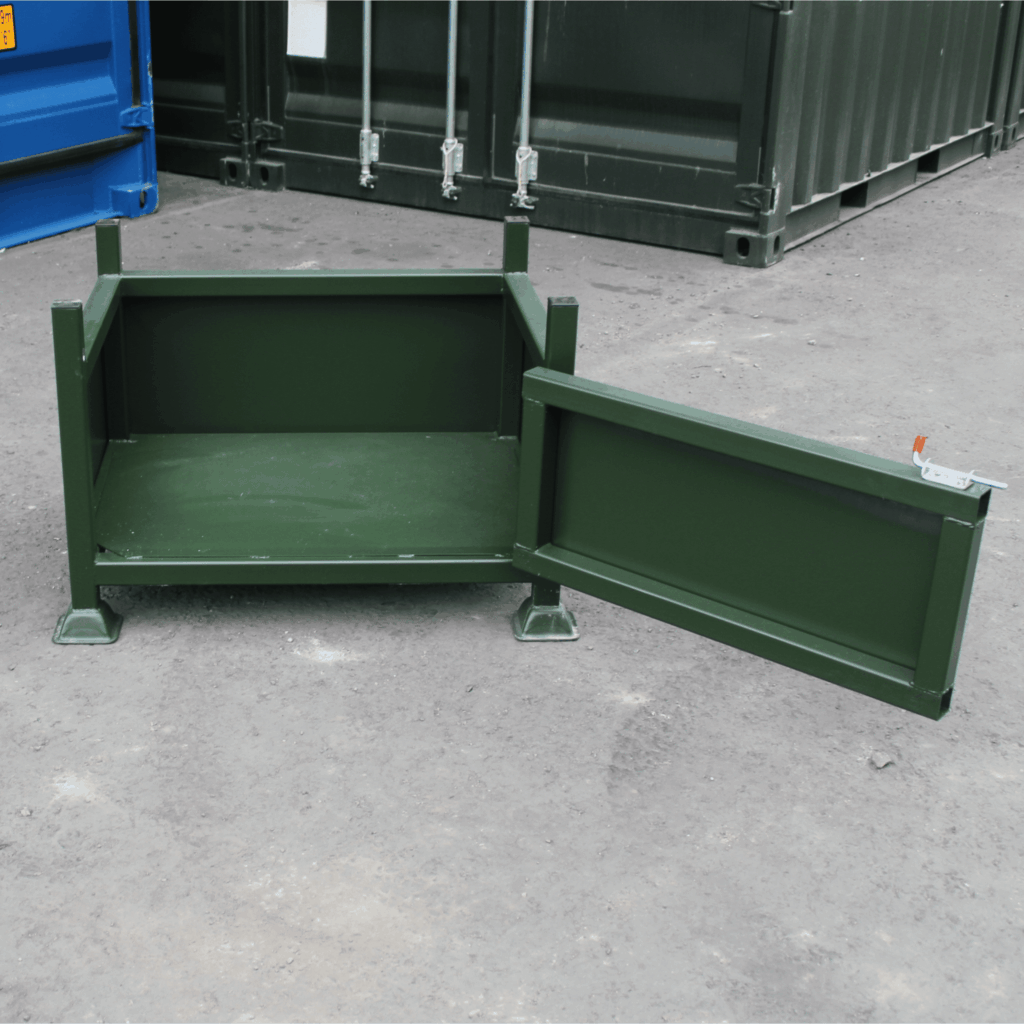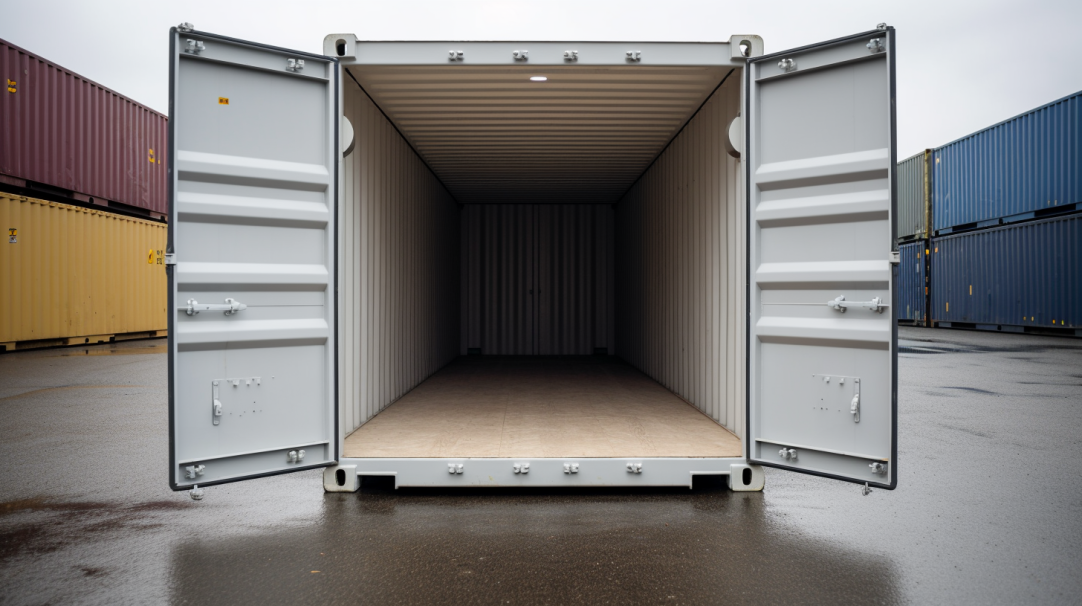In the world of manufacturing and logistics, efficiency is everything. While you might be familiar with wooden pallets, there’s a far stronger and more versatile solution that is quietly revolutionising how goods are stored and moved: the stillage. These steel-constructed containers offer a practical answer to common industrial challenges like product damage, wasted space, and workplace safety.
Read on to learn what stillages are, why they’re a smarter choice than a traditional pallet, the different types you can use, and how they can help you maximise your operational efficiency.
What are stillages?
Stillages are essentially heavy-duty, steel containers designed for industrial storage and transport. Their main job is to store, protect, and move goods efficiently within demanding environments.
Unlike standard flat pallets, stillages have vertical sides made from steel mesh or solid panels, creating a secure enclosure that prevents items from shifting or getting damaged during handling or transit. The result is a more dependable way to store and transport materials across fast-paced operations.
Stillages vs. Pallets
Pallets are widely used across many industries, but they come with limitations, especially when dealing with loose items, awkward shapes, or anything that needs extra protection. Stillages offer better security and stability through built-in sides that contain and protect goods.
The steel construction also gives stillages far more strength and durability than traditional wooden pallets, making them ideal for heavier loads and long-term use in demanding environments.
If you need a storage and transport solution that offers better protection, easier organisation, and a longer lifespan, stillages are the clear winner.
| Feature | Stillage (Steel Container) | Pallet (Wooden Platform) |
|---|---|---|
| Material | Heavy-duty steel (often galvanised) | Wood (softwood or hardwood) |
| Containment | Full containment with sides or posts | None (requires wrapping or strapping) |
| Stackability | Designed to stack 4-5 high safely | Limited, often unstable, and requires racking |
| Protection | Excellent; protects contents from impact | Minimal; contents are exposed |
| Lifespan | 15+ years of use; highly durable | Short lifespan; prone to breaking and moisture damage |
Key features and components
Most stillages are made from steel, which gives them the strength needed for heavy, everyday use. They’re usually built using reinforced box-section or heavy-duty steel frames that support significant weight in demanding environments. To protect the structure even further, finishes such as powder coating or zinc plating (galvanising) are applied, giving the stillage excellent resistance to corrosion and daily wear.
Typical structural components include:
- Base: A heavy-duty base designed for easy compatibility with forklifts and pallet trucks.
- Frame: Welded, reinforced frames at the corners and edges to maintain structural integrity under load.
- Sides: Wire mesh panels (e.g., 50x50mm) or solid steel panels, depending on the need for visibility or protection.
- Stacking features: Reinforced rims and specially designed feet that interlock when stacked, ensuring stability and preventing slippage.
- Access points: Features like half drop-down gates or removable panels allow for easy loading and unloading, even when the stillages are stacked.
Most stillages support loads of around 1000–1200kg, making them well-suited for heavy industrial applications. This load capacity is validated through rigorous testing and certification processes ensuring safety and reliability.
Types of stillages
Choosing the right stillage is important for optimising operations. The variety of designs available means there is a stillage for almost any material or logistical challenge.
Post pallet stillages
Post pallet stillages are steel pallets fitted with vertical corner posts, allowing multiple units to be safely stacked without crushing the contents below. The open layout provides excellent ventilation and quick product visibility, which is ideal when you need vertical space-saving storage with reliable protection from weight-related damage.
Metal cage stillages
Metal cage stillages use welded or woven wire mesh sides to keep smaller or loose items secure during storage and transport. Many models include removable or fold-down gates that make loading and unloading straightforward. The mesh construction provides clear visibility of stored goods while maintaining security, and most units can stack 4-5 high.
Mesh stillages
Mesh stillages use an open mesh design on all sides to maximise airflow and visibility, making them ideal for goods that need ventilation (like certain agricultural products) or require frequent visual inspection. Their open design also makes them lighter and more economical than solid-sided alternatives.
Solid stillages
Solid-sided stillages use full metal panels instead of mesh, giving stored goods better protection from dust, debris, and side impacts. Their enclosed sides and strong, stable build makes them ideal for smaller or loose items that need secure containment. Typical load capacity is around 1000kg, providing the strength needed for heavier-duty industrial applications.
They also come in different designs to suit your setup, including standard solid-sided stillages, half-height front stillages for easier access, and front-access door stillages for quicker loading and unloading.



A-Frame stillages
A-frame stillages are designed for flat, fragile, or oversized materials such as sheet metal, glass panels, or doors. The angled structure prevents warping and gives stable support for items that cannot be stored flat or in conventional cages.
Collapsible and folding stillages
These space-saving stillages fold flat when not in use, typically down to around 280mm in height. When empty, up to ten collapsed stillages can fit in the footprint of a single loaded unit, significantly reducing return transport costs and the storage space required for empty units.
Post and pipe stillages
Post and pipe stillages are built for long or awkward items such as timber lengths, steel posts, carpet rolls, or pipes. The open frame accommodates oversized goods with ease, stacking up to four units high and supporting loads of around 1000kg. Some designs include optional plywood floors for added flexibility when storing smaller items upright.
Heavy-duty industrial stillages
For environments that demand maximum strength, heavy-duty stillages offer reinforced construction with thicker steel, extra bracing, and load capacities of 1500kg or more. These are ideal for machinery components, automotive parts, and other substantial materials.
Ready to upgrade your storage?
Whether you need a half-height stillage for easier access, a solid-sided option for secure storage, or a front-access door stillage for quick loading and unloading, we have a style to suit your setup.
Explore our full range of stillages to find the perfect solution for your needs.
Shop StillagesStillage uses across different industries
Stillages are more than simple storage units. Their durability, mobility, and flexible designs make them a practical solution across a wide range of industries. Whether you are organising stock in a warehouse, handling materials on site, or preparing loads for transport in shipping containers, the right stillage can improve efficiency, protection, and overall workflow.
Manufacturing and production
Stillages keep materials organised at every stage of the production process. They hold raw materials close to workstations, manage work-in-progress items between stages, and protect finished goods awaiting inspection or packaging. Mesh-sided designs make it easy for operators to see exactly what’s inside without opening containers, helping maintain a tidy, efficient, and safer shop floor.
Warehousing and logistics
In warehouses, stillages become a central part of daily operations. They are ideal for order picking, inventory segregation, and staging goods for dispatch. Their stackable design maximises vertical space, while standardised footprints integrate smoothly with existing racking and material-handling equipment. Mesh stillages also simplify stock checks and picking by giving full visibility of contents.
Automotive and engineering
Automotive and engineering environments often rely on stillages built for specific parts. These can include internal inserts or shaped cradles that keep components secure during handling and transport. This added protection helps prevent costly damage to sensitive or high-value items.
Retail and distribution
Retail distribution centres use stillages for organising seasonal stock, segregating inventory, and managing returns efficiently. Enclosed or caged designs stop goods from shifting during transport between warehouses and retail locations, reducing damage during transit.
Construction and building sites
On construction sites, stillages are a practical way to keep tools, equipment, and materials organised. They’re also convenient for storing items inside on-site shipping containers, helping you make better use of the space available. Their strong steel build copes well with busy site conditions, and their mobility allows you to position what you need exactly where it’s required.
Specialist materials and sectors
From glass sheets and panels stored on A-frame stillages to pipes, posts, and timber held in post-and-pipe units, there is a stillage design for almost every material type. Ventilated mesh stillages also work well for agricultural goods, textiles, and recyclable materials.
Need more storage than a stillage can offer?
Get a clear breakdown of sizes, uses, and typical costs so you can work out which container is the best fit for your storage needs.
Read our shipping container cost guide to compare options and prices now!
Read GuideBenefits of using stillages for your operation
There are many benefits to using stillages in your day-to-day operations, from keeping your workspace more organised to making handling tasks quicker and more controlled. They help create a smoother flow through busy environments and give you a reliable way to store and move goods with confidence. No matter the size of your operation, stillages add structure and efficiency where it matters most.
Maximising space
Stillages allow you to take full advantage of vertical storage, with many designs safely stacking four to five units high. This creates high-density storage without the cost of installing permanent racking or expanding your facility. Collapsible models save even more space when not in use, folding down to a fraction of their full height.
Improving safety
Safe containment reduces the risk of items falling during handling, a common cause of workplace injuries. Stable stacking minimises collapse risks, and mesh-sided units allow visual checks without opening containers. Keeping goods stored securely also helps reduce clutter and keeps aisles clear, supporting a safer working environment.
Reducing operational costs
Although steel stillages require a higher initial investment than wooden pallets, they offer significant long-term savings. Their lifespan often exceeds 15+ years with minimal maintenance. Reduced product damage, fewer replacements, and faster handling all contribute to lower operating costs. Plus, maximising existing space also helps you avoid expensive warehouse extensions.
Supporting efficient workflows
Standardised stillage sizes make it easier to plan warehouse layouts, calculate vehicle loading capacity, and move goods through receiving, storage, picking, and dispatch. Visibility through mesh designs speeds up stock checks, and the mobility of stillages keeps materials where they are needed, improving productivity across the operation.
The bottom line
Stillages have become an essential part of modern material handling because they solve real, everyday challenges. They help you stay organised, protect your goods, and make better use of the space you already have. With options suited to everything from small parts to long, awkward materials, there’s a design for virtually every task, whether you’re storing items in a warehouse, organising tools inside an on-site shipping container, or managing materials on a busy worksite.
By choosing the right stillage, you improve safety, reduce operational costs, and create a more efficient, predictable workflow. It’s a simple investment that delivers long-term value across your entire operation.





